
The Aerotec A-122 Uirapuru was a Brazilian military trainer aircraft. It was a low-wing monoplane with tricycle undercarriage that accommodated the pilot and instructor side-by-side. It first flew on 2 June 1965.

The Savoia-Marchetti SM.91 was a two-seat, twin-engined, Italian heavy fighter prototype, designed to compete in a 1942 revision to a long-range fighter-bomber contract offered by the Regia Aeronautica to Italian aircraft companies in 1938. The original 1938 specification yielded the Savoia-Marchetti SM.88, which the SM.91 was largely based on.

The CNNA HL-1 was a light utility aircraft developed in Brazil in 1940. It was a high-wing strut-braced monoplane with fixed tailskid undercarriage and seating for two persons in tandem.

The CNNA HL-6 was a civil trainer aircraft developed in Brazil in 1943.

The KW-1b Quero Quero is a sailplane that was produced in Brazil in the 1970s and 1980s. It is a conventional, single seat design of wooden construction. The undercarriage is a fixed monowheel, and construction is of wood throughout.

The Casmuniz 52 was a twin-engine light transport aircraft. It was the first all-metal aircraft built in Brazil, only the prototype was built.
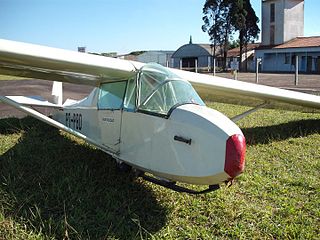
The Neiva B Monitor, also designated B-2, is a Brazilian tandem two-seat glider aircraft designed and manufactured by Indústria Aeronáutica Neiva between 1945 and 1955 for primary training and general flying.
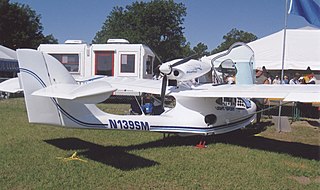
The Seamax M-22 is a Brazilian single-engine, amphibious light sport aircraft (LSA) and Fédération Aéronautique Internationale microlight. Originally manufactured by AirMax Construções Aeronáuticas of Jacarepaguá and called the Airmax SeaMax, since 2015 it has been built by Seamax Aircraft of Sao Paulo.
The Baumgärtl PB-63 was a 1950s single-seat helicopter designed and built by the Austrian-designer Paul Baumgärtl for the Brazilian Air Ministry. The PB-63 was of a conventional pod and boom design with an open steel-tube construction and it had a single main rotor and a tail-mounted anti-torque rotor. It had a tricycle landing gear with the pilot in an open sided cabin at the front. The PB-63 was powered by an 85 hp (63 kW) Continental C85-12 flat-four piston engine.
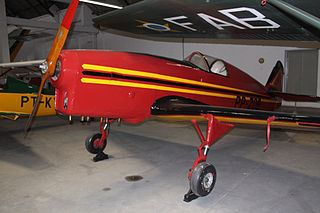
The IPT-16 Surubim was a Brazilian single-seat, single engined experimental light aircraft. A single example was built and flown in 1959.
The IPE KW-2 Biguá is a sailplane that was produced in Brazil in the 1974.
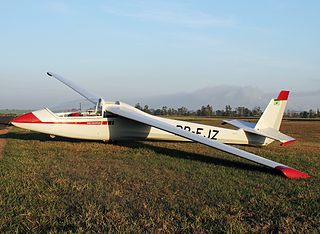
The IPE 02 Nhapecan is a sailplane that was produced in Brazil in the 1970s and 1980s. It is a conventional, two seat design of wooden construction.

The Embraer EMB 400 Urupema initially called IPD 6505 Urupema, is a Brazilian glider developed at Instituto Tecnológico de Aeronáutica, São José dos Campos, in 1964, and later produced by Embraer.
The Niess 1-80, also known as Galeão 5 FG, was a military and civilian trainer aircraft built in Brazil during the 1950s. It was originally developed by Marc Niess as an prototype based on the CAP-4 Paulistinha, which he worked while employed at Companhia Aeronáutica Paulista.
Fábrica do Galeão was a Brazilian aircraft manufacturer established in Rio de Janeiro at Galeão Air Force Base.
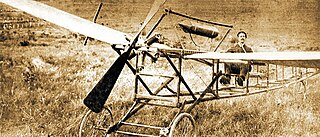
The S. Paulo was a Brazilian single-engine, single seat aircraft, was the first airplane to fly in Latin America.
The Alvear was a Brazilian single-engine, single-seat aircraft.

The IPT-0 Bichinho was a Brazilian single-seat, single engined experimental sports aircraft.
The SP-18 Onça was a Brazilian single-seat, single engined experimental agricultural aircraft.
The IPAI-26 Tuca was a Brazilian single engined high-wing light utility aircraft.












